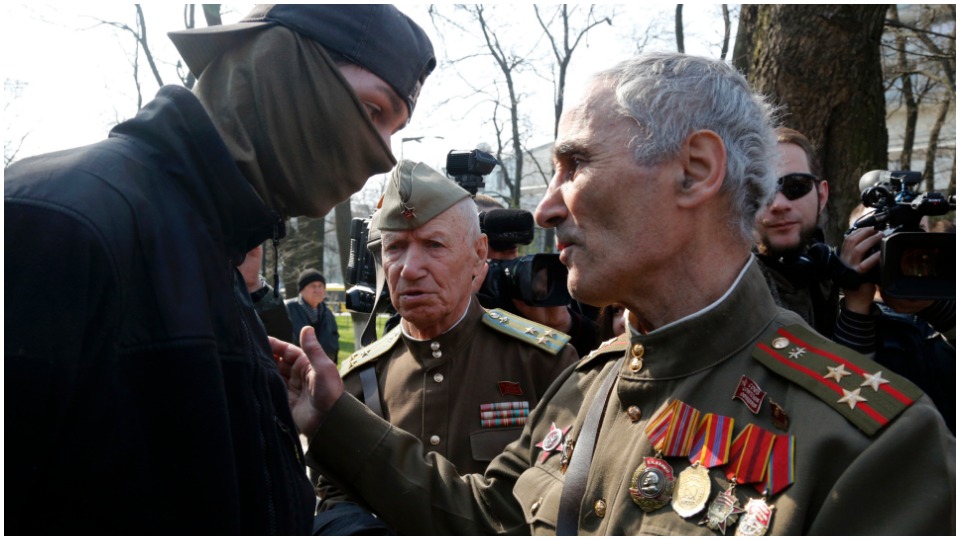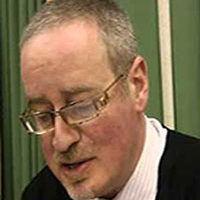
When I wrote my book, Freedom From Tyranny, the “Prague Declaration on European Conscience and Communism”—which in terms of falsifying history ranks up there with the Protocols of the Elders of Zion—was still taking shape.
The Prague Declaration was initiated by former Czech president Vaclav Havel in 2008 but has changed its title a bewildering number of times. It is the parent of “Black Ribbon Day” and the “European Day of Remembrance for Victims of Stalinism and Nazism,” adopted by the European Union in October 2011. And it is the core text behind a motion entitled “Importance of European remembrance,” adopted by the EU Parliament on Sept. 19, by 535 votes against 66, with 52 abstentions.
What is the Prague Declaration you might ask? It is the centerpiece of a movement, started in 2008 in eastern Europe, based on notions of a “red/brown equivalence,” or horseshoe political theory. Extreme right and extreme left somehow meet and fuse, Nazis and communists become interchangeable. Pro-Hitler forces are rehabilitated. And the Holocaust becomes just one of many, no more or less important than say the Holodomor famine in Ukraine, which it is claimed was manufactured by communists.

The great Nazi-hunter Efraim Zuroff, of the Wiesenthal Centre, describes it as: “The main manifesto of the false equivalency movement.” And if anyone is qualified to know, it’s him.
In the declaration and all its iterations, communists and Nazis are made to appear indistinguishable, lumped together as “extremist ideologies.”
It has been sponsored by the EU, notably during recent Czech and Polish presidencies, and has been given a significant budget, added to by constituent governments. These are reinforced by amply funded NGOs, including the right-wing Robert Schuman Foundation, to establish museums of historical memory of the crimes of totalitarian regimes. In some countries these have merged the universally accepted Holocaust with “crimes of Soviet occupation.”
It includes an extensive educational program, the Platform of European Memory and Conscience, which groups government agencies from 55 countries, including 12 from the EU and the U.S. Their target is to “prevent intolerance, extremism, anti-democratic movements, and the recurrence of any totalitarian rule in the future.”
Yet it is somehow only directed against the left, the legacy of the Red Army, partisans from all countries as far apart as Belgium and Croatia, the USSR, and present-day Russia, which continually protests against its uses. You will look in vain for condemnation of the bloodthirsty Spanish dictator Francisco Franco, the fascist dictatorship in Portugal under António de Oliveira Salazar, or the more recent iron-fist regime of the Greek colonels.
Point one of the Prague Declaration reads: “Reaching an all-European understanding that both the Nazi and communist totalitarian regimes each need to be judged by their own terrible merits to be destructive in their policies of systematically applying extreme forms of terror, suppressing all civic and human liberties, starting aggressive wars and, as an inseparable part of their ideologies, exterminating and deporting whole nations and groups of population; and that as such they should be considered to be the main disasters, which blighted the 20th century.”
In this formulation, the Holocaust evaporates, as does any rationale for fighting on the anti-fascist side. That’s exactly what its supporters want, because many of them laud forces which fought for fascism and participated in the Holocaust. One thing is for sure, the Declaration doesn’t contest historical memory, it rips it up.
The Declaration includes a call for Nuremberg trials to be reopened and extended to include communists. Zuroff, the Nazi-hunter, has said the Declaration draws the impossible equivalence between “those who built Auschwitz and those who liberated it.” The Wiesenthal Centre accused the Declaration of containing “anti-Semitic, racist, and Holocaust distortionist motives.”
Back in 2011, its signatories were a who’s who of reaction across Europe. Its advocates represented a real tapestry of class interests: neoliberal capitalists in the Czech Republic; big money oligarchs, bloated on post-Soviet privatization scams; fascist foot soldiers in Lithuania, Ukraine, and Hungary; and right-wing NGOs in the revisionist “historical memory” movement, especially influential in the Czech Republic and Poland.
But there were more powerful government forces, including some which rejected the post-war border settlement and were busy again making territorial claims on each other. Former British Prime Minister Margaret Thatcher sent a greeting to the original convention which adopted the Declaration, but she quickly recoiled, despite her anti-communism. In the British Parliament, the Prague Declaration was smashed in a brilliant campaign led by John Mann MP, then chair of the all-parliamentary committee on anti-Semitism.
My book pointed to a series of directions that the Declaration movement might take. It could remain at the level of the anti-communist “color revolutionaries,” who were effectively gaining a foothold in the power structures of the EU. It could seek foot soldiers. And it could opt to use the considerable resources of government and NGOs to press its case home. In fact, it has used all three.
The Maidan Square fascist putsch in Ukraine followed in 2014, and MEPs (Members of the European Parliament) and their lobbyists from the accession states new to the EU brought historical revisionism into the corridors of power in Brussels and Strasbourg. The people and forces behind this movement have now become very important, not least because another phase, not anticipated by me in my book, involved the enlistment of many social democrats.
At the Sept. 19 vote, British Labour MEPs consciously added their voice to those repressing labor movements in countries such as Poland, Hungary, and Romania. Labour MEPs voting with the extreme right who are pushing the neoliberal austerity path should ring alarm bells. And fortunately it has. MEPs are used to a rather loose level of scrutiny. But this latest vote has drawn attention and condemnation from a broad spectrum. In Rome, 10,000 marched to condemn it. It has been discussed at Labour meetings and trades councils. And it isn’t going to stop there. In the current climate, with accusations of anti-Semitism, it is clear that the Labour leadership will have to investigate, and in my view should condemn outright, the action of the Labour MEPs.
No Labour Party member I have ever associated with will want their representatives lined up with Poland’s Law and Justice Party, Silvio Berlusconi’s Forza Italia, Austria’s Freedom Party, or those around Viktor Orbán in Hungary with their questionable track record towards the Jews, or the Homeland Union of Lithuania, now headed by the grandson of one of the two founders of the Prague Declaration.

In Britain, the Communist Party was the first to raise questions. Its focus is unsurprising, given the kind of forces around the motion in Estonia, Latvia, Lithuania, Hungary, or Poland, where anti-communist legislation allows four years’ imprisonment for selling a pro-communist newspaper. The Declaration, now in the shape of an EU parliamentary motion, leads directly to the outlawing of first the symbols of communism, then the communist parties themselves.
Indeed, the post-debate report goes straight for the jugular, talking of “Soviet crimes” (many of these supposed crimes were committed when the USSR was a full-blown ally of Britain in the fight to the end against fascist barbarism) and modern-day Russia, which in some instances is called on to pay reparations for a country (the USSR) that no longer exists.
In Ukraine, an associate member of the EU, communists are being hunted down and some officials have been disappeared. In many countries, statues thanking the Red Army for its contribution to liberation are being broken up. Street and place names are being changed.
The Communist Party also pointed in particular to the role of the British ruling class in the historic process covered by the Declaration. It has called on “all those who value truth and wish to honor those who fought against fascism to repudiate this motion and call on the British Labour Party and trade union movement to formally condemn it.”
The latest vote is a green light to step up the repression and prosecution of communists. It’s an echo of the past, but also a truth: Wherever communists are persecuted, austerity is imposed, labor movements are repressed, and anti-worker legislation follows.
Phil Katz is author of Freedom From Tyranny — the Fight Against Fascism and the Falsification of History, available from Manifesto Press. This is an abridged version of an op-ed that first appeared in Morning Star.












Comments